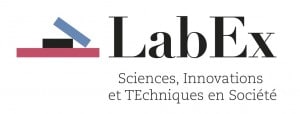Abstract
We mapped submarine canyon research using a scientometric approach to define and characterize its scientific landscape based on a comprehensive bibliographic dataset. The abundance of studies covering structural and functional aspects of submarine canyons allowed us to identify the existing knowledge clusters, historical trends, and emergent topics in canyon research. Our analysis documented a network of knowledge clusters of which four were particularly relevant: a strong cluster on “Geology & Geophysics”, well established since the beginnings of canyon research; a cluster on “Biology & Ecology” that gained strength primarily over the past two to three decades; a cluster on “Oceanographic Processes” which occupied a central position in the network and connected strongly to almost all the other clusters and especially to the fourth main cluster on “Modelling”. A smaller, but also well connected, cluster on “Biogeochemistry” related closely to “Biology & Ecology”, and three other small clusters (“Sedimentology”, “Sediments & Tidal Currents”, “Canyon Sampling”) bridged the main clusters. Finally, we identified three small, but specific satellite clusters (“Oil & Gas”, “Chemosynthetic Communities”, “Molecular & Symbionts”). The high-level structure of the knowledge network reflects a latent interdisciplinarity in canyon research. However, the evolution of the research lines over the past nine decades suggests that this pattern arose mostly in the new millennium. Emergent research topics in the last decade also reveal a concern regarding anthropogenic impacts and climate-driven processes. Our results also show a well implemented and international collaboration network, although research efforts have been mainly directed towards only a few canyon systems. A geographical and thematic bias also characterizes canyon research, with specific topics addressed preferentially in particular canyons by different leading research institutions. This spatial and thematic bias, together with the paucity of truly inter-disciplinary studies, may be the most important limitation to integrated knowledge and development in canyon research and hinders a global, more comprehensive understanding of canyon patterns and processes. The scientific landscape mapping and the complementary results are made available as an open and interactive platform that canyon stakeholders can use as a tool to identify knowledge gaps, to find key players in the global collaboration network and to facilitate planning of future research in submarine canyons.
See all documents refering Cortext Manager






